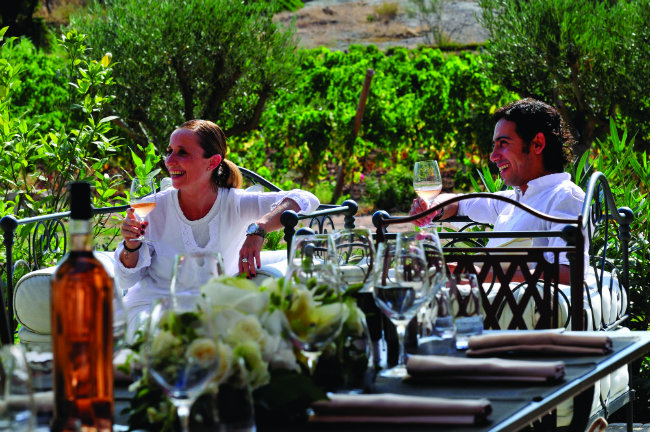Taste the Terroir: Following the Provence Wine Route

We see how a mapped trip along the Provence Wine Route takes its aficionados much closer to grape heaven, and we chart the ancient history and immediate future of the region’s famous rosé.
There is no better way to discover what makes Provence’s rosé wine so distinctive than by meeting some of the 430 local winemakers at their estates on the Provence Wine Route, which stretches from Nice to the Camargue.
Provence is the oldest wine-growing region in France and its climate, offering hot summers and strong winds, helps keep the vines dry and free from mildew, mould and rot. More AOP (Appellation d’Origine Protégée) rosé is produced here than in any other French region, but red and (to a lesser extent) white wines are also made from the dozen or so different grape varieties.
The first grapevines were planted in Provence by the Greeks some 26 centuries ago, when the only wine would have been blush-coloured and similar to rosé. Making red wine from red-skinned grapes proved somewhat trickier. Later, Roman settlers established vineyards and when Provence’s monks took to making wine, the profits were being ploughed into monasteries.
There are three wine ‘appellations’ associated with the region: Côtes de Provence, Coteaux Varois en Provence and Coteaux d’Aix-en-Provence, which correspond to the coastal area, the Var and the area around Aix-en-Provence.

Following the Provence Wine Route
Visiting the Vineyards
Wine lovers are welcome to visit local vignerons for a tasting, a tour of the cellars and a walk around the sun-soaked vineyards. You can join the Provence Wine Route to discover hidden estates across each of the appellations and find out from owners how the techniques used to make the rosé wines differ from those used to make red and white. To really make the most of your time, book a stay at one of the fabulous B&Bs or country inns on the Provence Wine Route.
There are also plenty of wine-themed events going on in and around the vineyards, and visitors can now also make use of the new ‘Route des Vins de Provence’ tourist map detailing all the appellations, maisons des vins, domaines and co-operative cellars. Presented in two parts – east and west – it also provides all the necessary links you’ll need to plan your visit in advance.
When it comes to actually pairing the wines with food, Provence’s lively young reds pair well with grilled meat, while the region’s fruity rosés are better matched with fish and vegetable dishes. As for the light and elegant white wines, these are excellent as an aperitif or with goats’ cheese. That said, the growing popularity of Asian food has led to a big increase in the consumption of rosé wine over the past decade, so plus ça change, plus c’est la même chose…
For further information on the wines of Provence, please visit www.vinsdeprovence.com. For more on the Provence Wine Route go to www.routedesvinsdeprovence.com or use the mobile-friendly version, http://m.routedesvinsdeprovence.com.
Want to discover the real Provence? Join France Today on our authentic yet intimate tours of Provence
From France Today magazine
Share to: Facebook Twitter LinkedIn Email
Leave a reply
Your email address will not be published. Required fields are marked *



